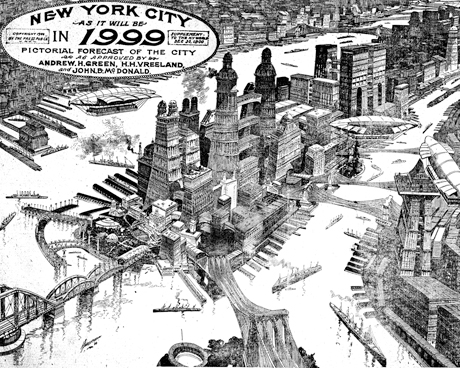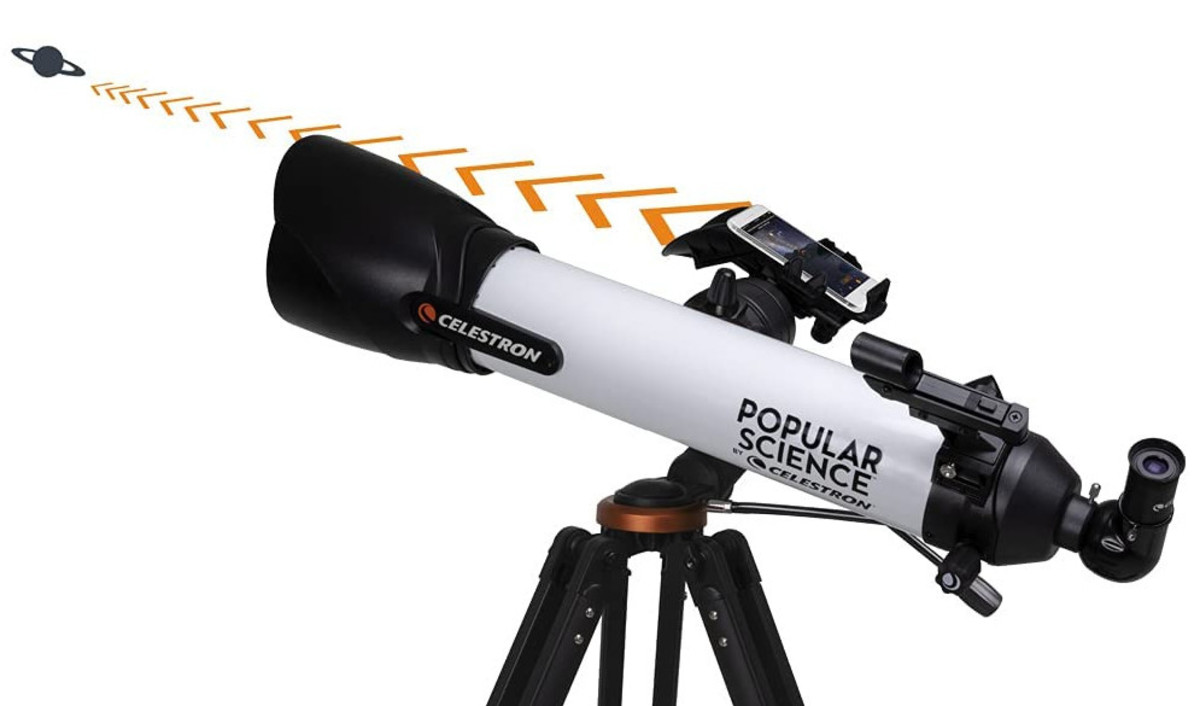The Twenties II- 2020’s Can We Predict the Future?
Part of being a historian, for me anyway, is having an intense interest in the future and the direction to where the past and present will lead us. This is a bit of a divergence from the previous article and attests to my sometimes quirky nature.
Nostradamus:
I had a period of my life in during the late 1980’s when I was obsessed with this man. How was it possible that a man that lived in the 16th century could even come close to having knowledge of events taking place centuries after his passing? I wanted to sort out the difference between ‘media hype’, interpreting the quatrains of his writing ‘ex post facto’ with all the Jean Dixon stuff that we have discredited against the ‘real thing’. I took the trouble to go to the Denver Public Library to do my own research. I wanted to check on the reliability of one of his predictions, a simple one that could not be ‘spun’ a great deal. I picked up a book on Nostradamus printed in 1911, and wanted to see if one of his three terrors of future as well described by him, Adolph Hitler, was actually mentioned but his name misspelled as ‘Hisler’. In 1911, Hitler was a young adult inAustria, and was completely irrelevant. The book was printed before Hitler’s significance and the quatrain was there. So, how did Nostradamus know? This could not be accepted as a coincidence. If the prophesies were from God, there would be no question as to their accuracy. The scholars have found many prophesy from Nostradamus that did not take place at the appointed time, if at all. No human being can be that prescient. I propose that he dealt in the black arts to obtain his prophesies and was given such powers from demonic forces.
The Writers
I look at the writings of Jules Verne and H.G. Wells representing late 19th century speculation, in age just before things started to really take off in the world of science and technology. I loved to read about these men, who dared to look ahead, peer into a future and hypothesize about its outcome. Benjamin Franklin once commented that he would have liked to be preserved in a cask ofMadeira and revived in a century to observe the progress of the republic that he helped to create. I am sure that he would have, as a well versed man himself, been quite amazed. Jules Verne’s novel “From Earth to Moon” had a couple of technical flaws, major, I would think. The use of cannon to launch men to the moon involved the passengers enclosed in a capsule as a projectile that in reality would have been destroyed by air resistance and the passengers virtually pulped by the G-forces that such a launch would involve. But that was not too bad for 1865, when the novel was written, considering the understanding of aerodynamics and astrophysics at the time.
Failure of Nerve
In 1900 a prominent member of the staff at the U.S. Patent Office stated that everything of significance had already been invented by that time. Prominent physicists thinking in terms of Newtonian physics could not conceive of energy derived from splitting or fusing atoms, both of which could easily occur within their lifespan.
During the 1890’s, a prominent scientist stated that heavier than air flight was fundamentally impossible and that flight was for birds, angels and fools. His failure of nerve was that while an anti-gravity device was not yet at hand, the ability of heavier than air objects to fly had always been universally demonstrated. How did the birds remain aloft? With the basics of aerodynamics figured out, all we needed was a lightweight power source which was heretofore, not available. By the end of the 19th century, we had that with the internal combustion engine along with two “daring do” bicycle mechanics that made history. So, the scientist would be proven wrong as the contradiction lay right around the corner.
During the 1920’s, the scientific community laughs at the rocket pioneer, Robert Goddard, regarding his treatise of reaching high altitudes and suggesting that space travel could well be possible. Well, unfortunately after his death, he was vindicated. What was considered science fiction became science fact within an individual’s lifetime.
I have been a consistent subscriber to Time magazine and Popular Science for the last 35 years, following developments as they occur. How about some more recent predictions that show a ‘failure of nerve”?
In a 1950 edition of Popular Science, a writer predicted that in the future computers available would only weigh a ton or more. Obviously, this was written at the dawn of solid state electronics and the potential of this technology was not really appreciated.
I had read that even Bill Gates once said that “no one would require more than some 640 kb of random access memory. So much for that idea, computers are routinely sold with random access memory capabilities in the gigabyte range. (Correction: this quotation is in dispute, he says that he never meant it that way. Well, consider it an example of computer memory capabilities during the early 1980's, all the same)
I read a 1985 Popular Science article that said that video display screens not using a standard picture tube would run into almost insurmountable technical obstacles when one attempted to make them much larger than what would be found on a transistorized television set. Well look at your HD television set, today.
I am guilty of this as well; I bought one of the first Tandy Radio Shack model computers appearing in the late 1970’s. Many of you may remember the one where you used your TV as the display and your cassette tape deck as your storage medium. You put in a couple of kitchen recipes and you were out of storage. I thought that this was just an expensive toy. I could not envision what was right around the corner and in plain sight.
As recently as the mid 1990’s, the idea that anyone needed hard drives beyond the five hundred megabytes range was unfathomable. So much for that, terabyte drives are now readily available to hold individual files and programs that would require more disk storage than the capacity of what was available on my first PC (200mb).
Predicting the future is perilous and even the most far sighted, prescient men that lived during a period could well ‘miss the boat’ The man who came as close as I could imagine to speculating on the direction of technology was the late Arthur C. Clarke. He envisioned orbital satellites and other elements of the modern world that came to pass. He wrote a book entitled “Profiles of the Future” which estimated technological achievement between the time it was written, 1970’s, to 2100AD. This is a most interesting read from someone who had an understanding of the subject matter. Usually if there is an economic imperative driving development of certain technology, the “inconceivable” will eventually be accomplished. The problem with many futurists is that they fail to take into consideration cultural and political changes and how they mesh into their prediction of technical advancement. For example, the ‘video phone” has been possible for over half a century, but it did not take off for cultural reasons. Do you want to answer a phone while you are in your underwear or your wife in curlers? It is an invitation to your home that you may not welcome.
Sketch around 1900 of New York City as it is Predicted to Appear in 1999

Radio Ga Ga by Queen 1984
I was thinking about you when I recalled this pop melody that had many scenes from Fritz Lang's 1927 film depicting life in the future entitled "Metropolis"
The 2020’s:
I want to introduce you to an interesting site that speculates on future developments. It appears to be British in origin and is a lot of fun. Much of the speculation beyond the end of the current century needs to be taken ‘tongue in cheek”, but it reveals some of the technical and many social and cultural trends expected over the coming century. I don’t want to even guess about 10,000AD, but they certainly do try. It is also interesting as it is not all ‘cheery’ making for a more realistic assessment. This is located at: http://www.futuretimeline.net/21stcentury/2020-2029.htm
You will each find some development that will make you salivate in anticipation. For me, possibilities for the near future reflects on preventative medicine are exciting and are within the realm to reality today. Imagine a bathroom mirror that employs pattern recognition technology that can scan your body daily for changes and lesions not visible to the naked eye. This information is recorded and made available electronically to your physician. Breast cancer and melanomas can be detected and treated early. What about the toilet” Did you know that they can take chemical analysis of your urine and send the results of that to your physician, how’s that for preventative medicine? Wouldn’t it be nice to find cures for cancer that do not involve drinking bottles of Clorox on a daily basis?
I expect that the next level of storage, a petabyte, would probably be commercially available in the next decade in the way the terabyte is today. I am not going to make the mistake of a ‘failure of nerve’; the last 20-30 years show a distinct pattern. A petabyte is a tremendous amount of storage capacity, but somehow because of the medium, which include high definition video and related programs, we will find a use for it. What we really need right now and what I am sure is around the corner, probably before 2020, is a universal increase in internet bandwidth to handle the more information intense media that is already available. The Road Runner isn’t running fast enough! Let me introduce you to the petabyte:
The hippocampus of a human adult brain has been estimated to store a limit of up to 2.5 petabytes of binary data equivalent.
The Internet Archive has approximately 3 petabytes of information growing at the rate of 100 terabytes each month.
This is equal to about 1 million gigabytes, pretty impressive, isn’t it?
My Future:
What I am waiting for is a development of a practical molecular based pattern replicator, that will render all material acquisition as a form of value, meaningless. I probably won’t be around to see that. But therein lies our maturation as a species. The development of teleportation would be mindnumbing and while there is only scant research, moving a particle, photon, without mass, instantaneously from one point to another, I am waiting for actual matter, even an atom, to be moved in such a way.
So much for the look ahead, thanks for reading!
- The Twenties-Aint We Got Fun?
For a more conventional history of the 1920's visit the link here identified.








